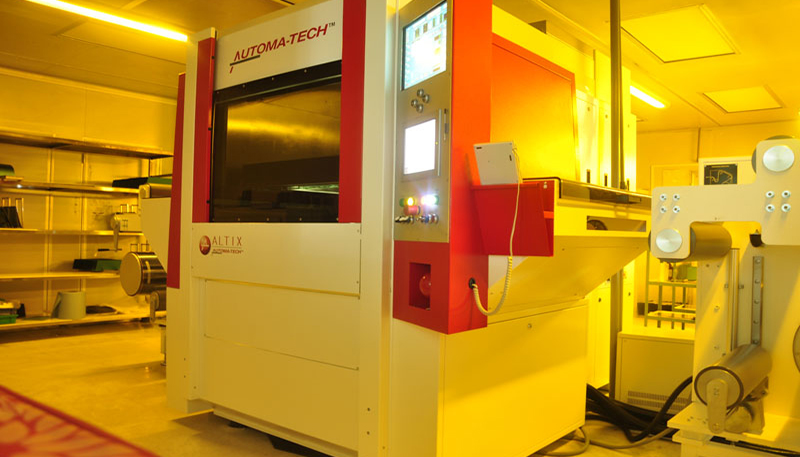
Etching stainless steel with etching cream is technically possible, but it is not the most effective or reliable method. Etching creams, such as those typically made for glass or softer metals, are often formulated with chemicals like hydrofluoric acid or ammonium bifluoride, which are specifically designed to etch surfaces like glass or mild metals. Stainless steel, however, is much more resistant to corrosion and chemical reactions due to its chromium content, which forms a protective oxide layer on the surface. This protective layer makes it difficult for most common etching creams to achieve a deep, even etch.
Chromium Oxide Layer: Stainless steel contains chromium, which forms an oxide layer that protects it from corrosion. This layer not only prevents rust but also resists chemical reactions. Etching creams often lack the potency to break down this layer effectively, resulting in a faint or uneven etch on stainless steel.
Chemical Composition: Most etching creams are formulated for softer, non-ferrous materials, so they do not contain the strong acids required to etch stainless steel thoroughly. The mild acids typically found in etching cream are too weak to penetrate the tough, durable surface of stainless steel, especially if the steel is high-grade or has been polished.
Limited Depth and Detail: Even if you manage to create an etch with an etching cream on stainless steel, the results are often shallow and may lack the precision or definition needed for detailed designs. For projects that require fine detail or depth, other etching methods are recommended.
To achieve a clear and deep etch on stainless steel, several more effective methods can be used. These methods can be more complex and may require specialized equipment or chemicals, but they are more suitable for stainless steel than etching cream.
Process: Ferric chloride is commonly used for etching stainless steel because it is much stronger than standard etching cream and can penetrate the chromium oxide layer. To etch stainless steel with ferric chloride, you typically mix the ferric chloride solution with water (usually in a 1:1 ratio) and immerse the stainless steel in the solution.
Safety: Working with ferric chloride requires proper protective equipment, including gloves, goggles, and a well-ventilated area, as it is corrosive and can be dangerous.
Advantages: Ferric chloride produces consistent results, making it a popular choice for etching detailed designs, logos, or patterns on stainless steel.
Process: Electrochemical etching involves using an electrolyte solution and an electrical current to etch the design onto the metal surface. A stencil is typically used to mask areas that should remain unetched. When the electric current passes through the electrolyte and the stainless steel, it causes a controlled corrosion effect on the exposed areas.
Equipment: This method requires a power supply, a conductive solution (often saltwater or a specialized electrolyte solution), and a stencil.
Advantages: Electrochemical etching is precise and can be used for fine details, making it popular for marking tools, jewelry, or industrial parts. It is also relatively safe when done with the proper setup.
Process: Laser etching uses a high-powered laser to mark or engrave the surface of the stainless steel. The laser effectively vaporizes the top layer of metal, creating a visible design.
Equipment: This requires access to a laser engraver, which can be expensive but provides very high precision.
Advantages: Laser etching is non-contact, so there’s minimal wear on the equipment, and it allows for very detailed designs. It’s often used in commercial and industrial applications where consistent and precise etching is essential.
Process: Sandblasting uses a high-speed stream of abrasive particles to wear away the surface of the stainless steel, which can be controlled to create a design. A stencil can be applied to protect areas that should not be etched.
Equipment: Sandblasting requires an air compressor, a sandblasting cabinet, and protective gear.
Advantages: This method allows for deep etching and can cover large areas, making it suitable for creating textured patterns or logos on stainless steel.
If you are interested in a shallow etch, and the stainless steel piece is of lower grade or has a thin surface layer, some etching creams might produce a faint mark. However, results can vary widely and may not be permanent or uniform. For most projects on stainless steel, one of the methods mentioned above is preferable due to their effectiveness, precision, and the quality of the results.
Always Use Protective Equipment: Regardless of the etching method, wearing gloves, goggles, and working in a well-ventilated area is essential when working with corrosive chemicals.
Follow Manufacturer Instructions: Whether using ferric chloride, an electrolyte solution, or abrasive equipment, carefully follow instructions for safety and optimal results.
Practice on Scrap Metal: If you're new to etching stainless steel, practice on scrap pieces to refine your technique and avoid costly mistakes.
In summary, etching stainless steel with etching cream is possible but not ideal. Stronger methods such as ferric chloride etching, electrochemical etching, or laser engraving are generally more effective and produce better results on stainless steel. Each technique has its unique requirements, so choose based on the level of detail, depth, and finish you need for your project.
Contact: andy_Lai
Phone: 18938693450
E-mail: yw9@zldsmt.com
Add: Building A3, Huafa Industrial Park, Fuyong Town, Fuyuan Road, Fuyong Town, Baoan District, Shenzhen,China